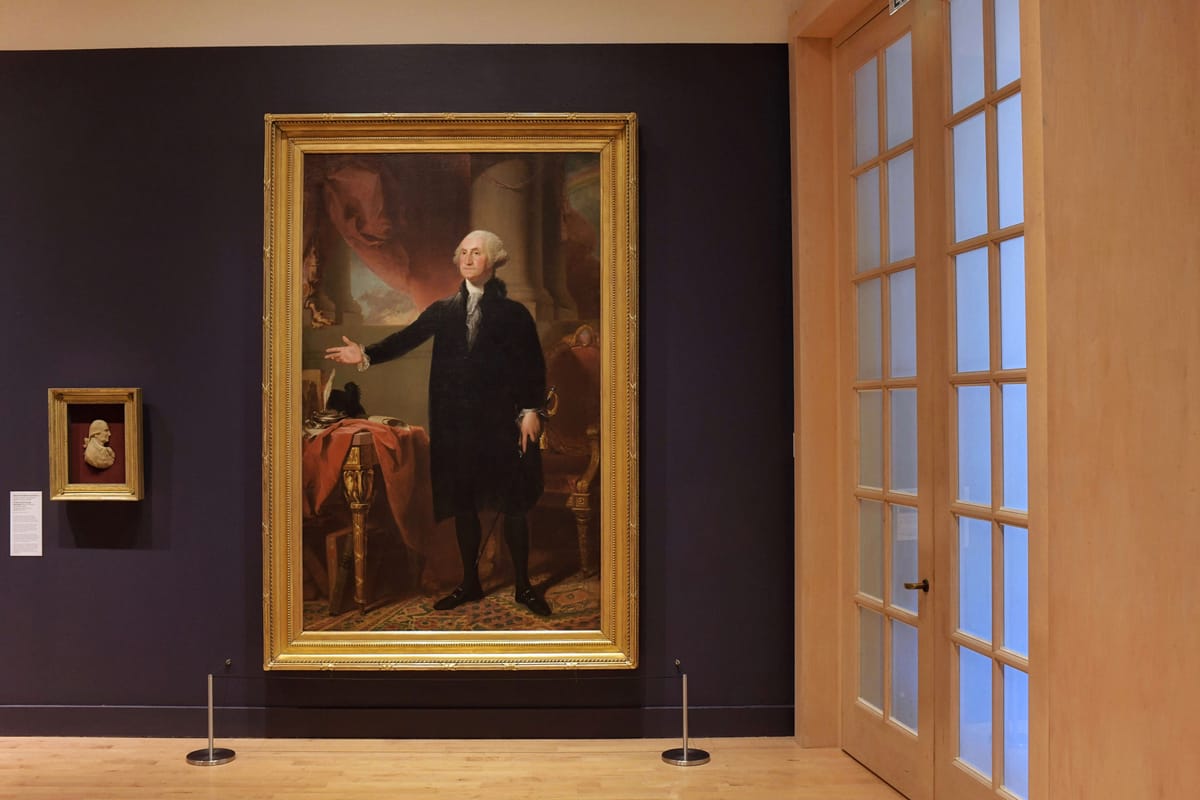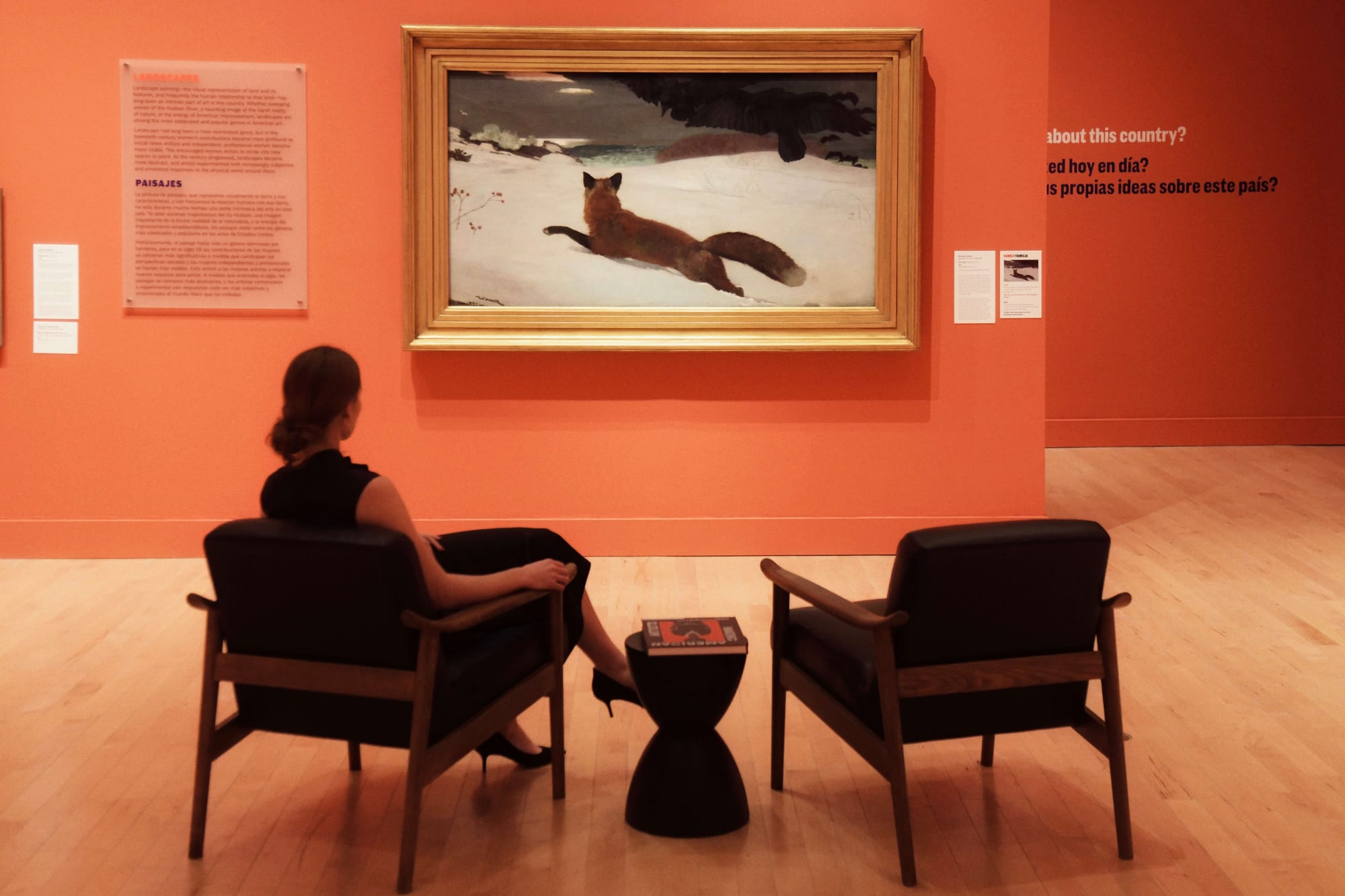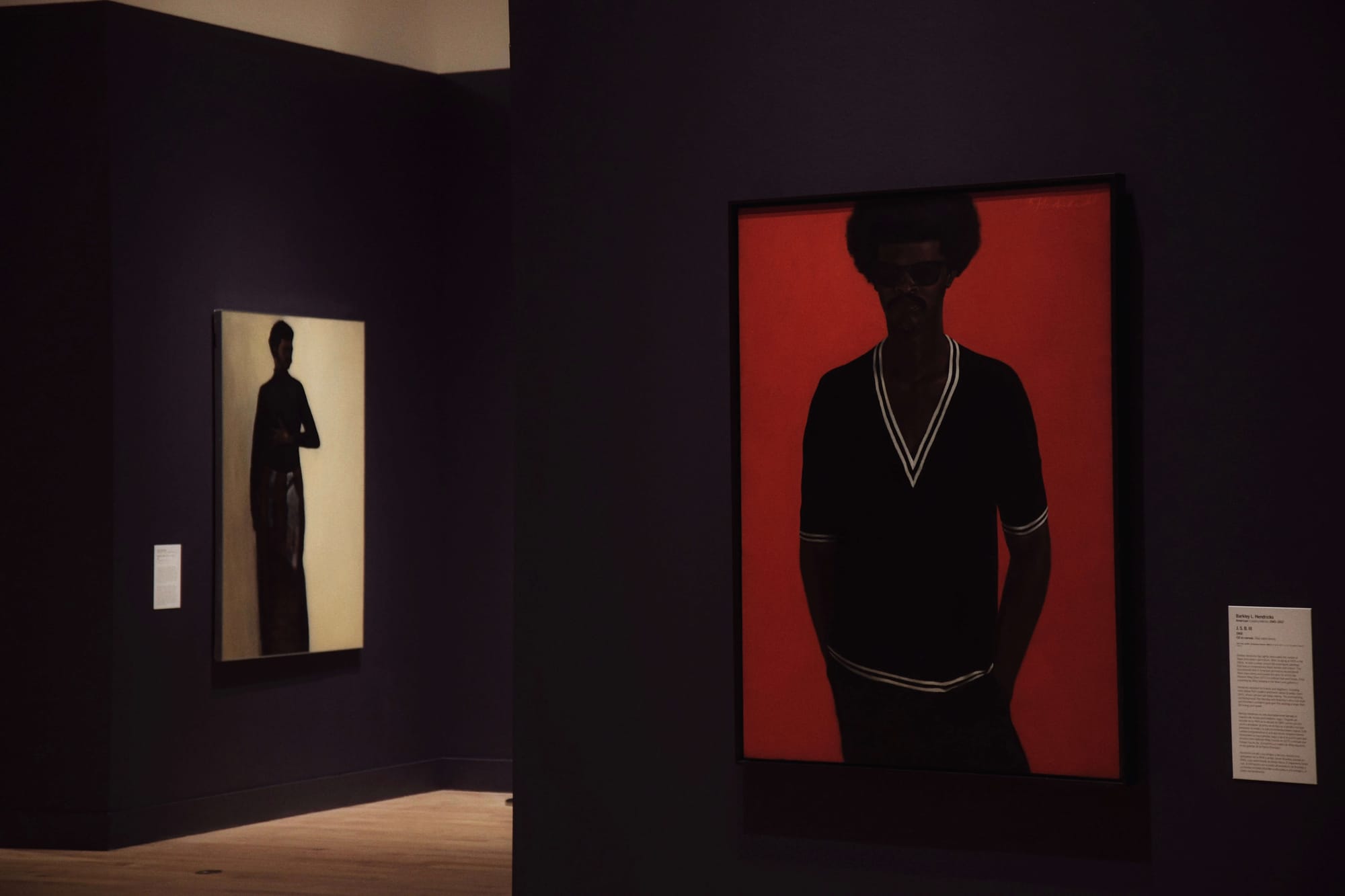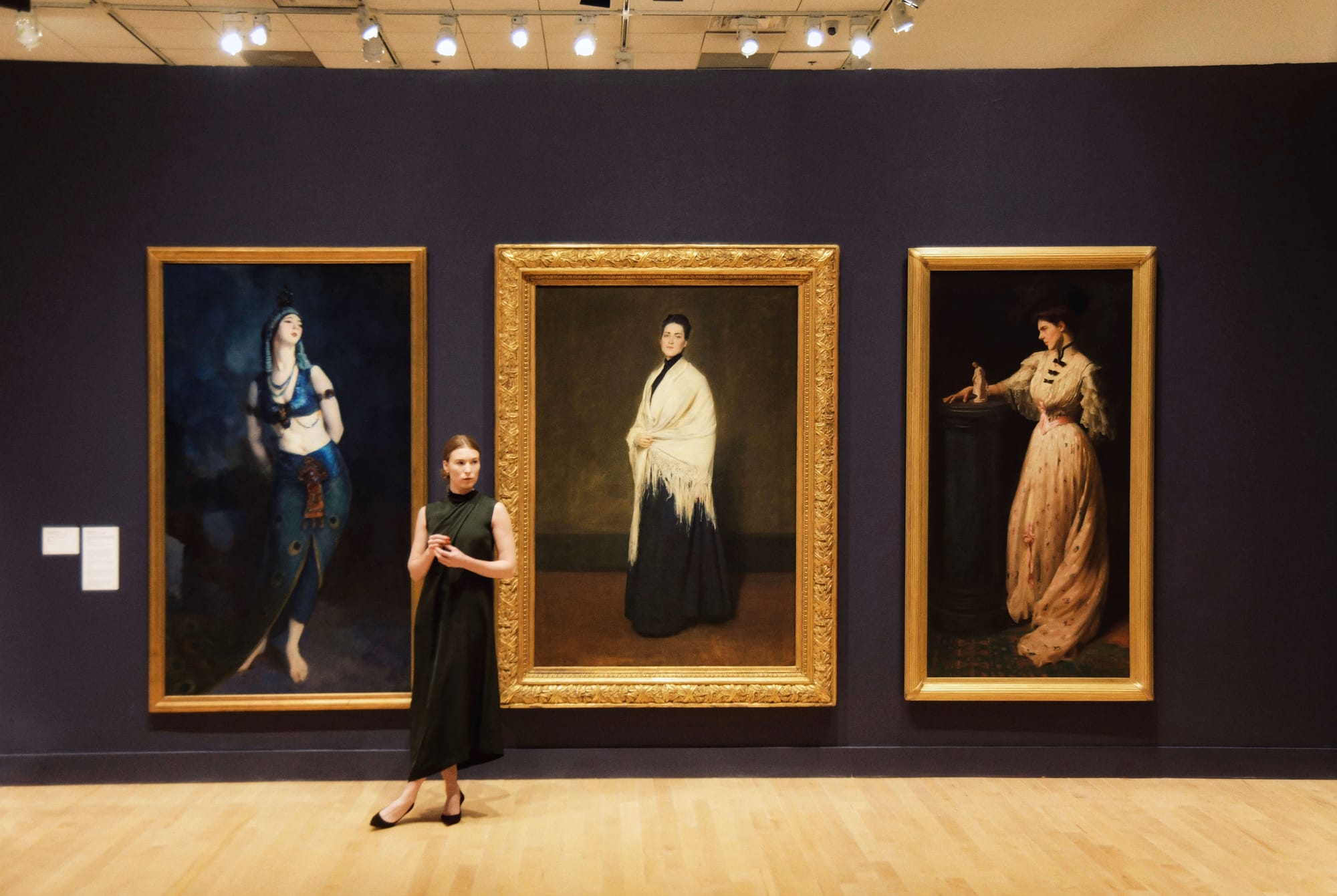
With the Presidential election on the horizon, Pennsylvania is on many Americans’ minds as one of the key states that could help determine the next chapter of life in the United States. In Tulsa, however, Pennsylvania is top of mind for more artistic—though no less socially and politically minded—reasons. The new exhibition on view at the Philbrook through Dec. 29, American Artists, American Stories from the Pennsylvania Academy of the Fine Arts 1776-1976, presents 200 years of American art in just over 100 striking, surprising and pivotal works.
Rather than present the artworks chronologically, Dr. Anna Marley, former Curator of Historical American Art at the Pennsylvania Academy of Fine Arts (PAFA) and the organizing curator of the exhibition, developed five thematic sections into which each work is situated: portraiture, history painting, still life, genre or scenes of everyday life and landscape. While this exhibition is not exhaustive, it is a 200-year sampling of artworks from PAFA’s collection that prompt consideration of what it means to be an American; what American art is and was; and how our diverse perspectives can continue to write the American story.
The exhibition highlights paintings and sculptures that are quintessentially American and those less familiar, as Marley focused on curating an exhibition that centers the legacy of PAFA as a leading collector of artworks produced by women, artists of color and LGBTQ+ artists from early in its history. The exhibition presents questions throughout the galleries, intended to prompt the viewer to consider the connections among art, power, identity and representation.


Founded in 1805 by a group of Philadelphia’s leading residents, the Pennsylvania Academy of Fine Arts is recognized as the first school and museum of fine arts in the United States. From its inception, its museum has worked to develop and advance the young nation’s artistic presence and future. It’s appropriate for this exhibition to come from PAFA’s collection, as its aim has consistently been to tell America’s many stories through art while expanding who gets to tell those stories.
It’s therefore unsurprising that one of the largest sections within the exhibition is portraiture, which includes works such as Gilbert Stuart’s “George Washington” (1796), James Brantley’s “Brother James” (1968), and Isamu Noguchi’s “Girl Torso” (1958). The exhibition opens with an unexpected trio of portraits by PAFA founder Charles Willson Peale, Joan Brown and Barkley L. Hendricks, immediately setting the stage for the breadth of approaches and perspectives encountered moving through the exhibition.
It seems only appropriate for Peale to invite museum visitors into the exhibition with his self-portrait, “The Artist in His Museum” (1822). It’s a fitting piece for a show about American identity, as the space in Peale’s is where the Declaration of Independence was signed and the United States Constitution was drafted. Typical of the time, the museum space depicted in the painting shows natural history objects and portraits of early American heroes. This work starkly contrasts its two neighbors, Joan Brown’s 1977 “Self-Portrait” and Barkley L. Hendricks’ “J.S.B. III” (1968). Though smaller in stature, the later painting is equally arresting as Peale’s work, depicting fellow PAFA student and friend James Brantley looking sartorially cool with a highly saturated flat red background behind him. Similar in style to Alex Katz’s portraits of friends and family, Hendricks however, was known for his contributions to Black postmodern portraiture, and created large-scale portraits that foreground Black fashion and masculinity.
In a complementary effort, throughout the exhibition, artwork didactics cite works on display from Philbrook’s collection that help tell a fuller story of American identity. The didactic for Hendricks’ “J.S.B. III” includes mention of Kehinde Wiley, whose work is on view in the main level gallery at the Philbrook, building on the legacy of Black masculinity and monumental portraiture. It’s a fitting link, as Wiley served as the artist chosen by Barack Obama, our nation’s first Black president, to paint his official portrait.
In the history painting section, along with works by Mary Cassatt, Henry Ossawa Tanner, Alice Neel and Horace Pippin, hangs Benjamin West’s “Penn’s Treaty with the Indians” (1771-72). The painting depicts a mythologized moment of land transfer between Quaker leader William Penn and Tamanend, Chief of the Turtle Clan of the Lenni Lenape. Commissioned 100 years after the negotiation by Penn’s son during a challenging political period, the romanticized history painting served as a symbolic representation of peace, cooperation and colonial settlement between European Americans and Native Americans on land that would become Pennsylvania.
One only needs to look at Native American life in Oklahoma to recognize the misrepresentation depicted in Penn’s painting. Forced relocation brought the Lenape people, also known as the Delaware, to Oklahoma, where they are represented by two federally recognized tribes: the Delaware Tribe of Indians in Bartlesville and the Delaware Nation in Anadarko.


“Penn’s Treaty with the Indians” reveals the gap in Native art in the exhibition. While each artist included in the exhibition was touched by PAFA’s influence, as former students, faculty or exhibitors, many voices are not represented within this show—namely those of Native, Asian American and Latinx artists. Sensitive to this omission, the Philbrook is concurrently displaying WAR CLUB: Native Art & Activism, the culminating exhibition of the multi-year project of Osage mother-son duo Anita and Yatika Fields exploring Native artwork and ephemera from historical and contemporary moments of resistance.
Just beyond the history section hangs The Salon Wall, a collection of artworks hung nearly floor to ceiling in the style of 18th- and 19th-century exhibitions at the Paris Salon. The presentation at the Philbrook juxtaposes pieces not typically shown side by side, such as Daniel Garber’s “Quarry” (1917) next to Milton Avery’s “Oxcart—Blue Sea” (1943) and Thomas Eakins’ “Walt Whitman” (1887-1888). The Salon Wall allows the viewer a compacted opportunity to ponder the relationships among artworks that span various periods, perspectives and subject matter but all maintain an American identity.
A warm scene of four women huddled over a steaming washbasin draws eyes into the genre section. In her 1888 painting “In the Wash-House,” Anna Klumpke depicts a banal scene of working-class women. An American expatriate living in Paris, Klumpke was a frequent exhibitor at the Salon, receiving several awards for her portraits. Scenes like this were typical during the 19th century, with artists depicting moments of everyday life; the delicate treatment of the scene and the size of the painting prompt consideration of this mundane task. Though larger in size, the painting recalls the gentle handling of quotidian light and space seen in 17th-century Dutch works like that of Johannes Vermeer. For this piece, Klumpke was the first woman to win the Temple Gold Medal at PAFA. On view in the Philbrook is a work by Rosa Bonheur, who was Klumpke’s life partner; after her death, Klumpke dedicated her life to Bonheur’s legacy. The two initially found each other in Paris and are reunited in Tulsa.
The blood-orange walls of the final galleries enliven the exhibition’s still life and landscape sections. Dominated by women, the former section includes works by Raphaelle Peale, Margaretta Angelica Peale, Georgia O’Keeffe and Louise Nevelson. Paintings of fruits, flowers and interior spaces blend into the landscape section of the exhibition, where abstracted landscapes such as Sonja Sekula’s “The Rains” (1949) contrast with the more traditional treatment of space, as seen in Thomas Moran’s “Two Women in the Woods” (1870). In this section, we return to the grandeur of American storytelling centered on expansion, natural beauty and discovery.
One of the last paintings of the exhibition depicts a heartbreaking experience of rugged and wild American perseverance personified by a fox in Winslow Homer’s “Fox Hunt” (1893). The painting presents the harsh realities of a Maine winter as a fox, desperate to escape vulturous crows, bounds through endless drifts of deep white snow. Both animals are fighting for their survival within the American landscape. Though saturated with tension and challenge, the placement of Winslow’s paintings as one of the exhibition’s final works speaks to the persistence and grit of the American spirit. It’s a gripping work to end with, as the viewer identifies with the hunted fox’s perspective. If our enduring national fortitude and the tenacity of the American dream can give us any glimpse into the result of this work, I’d like to think that the fox makes it in the end.

